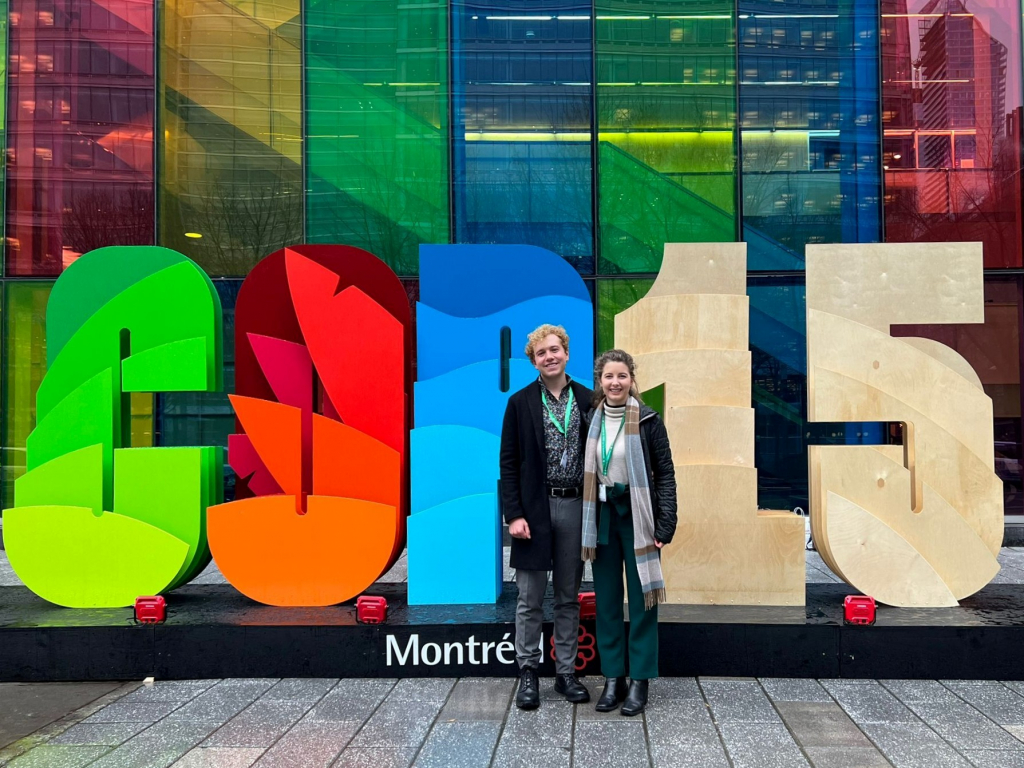Our hopes for COP15

This week, the much anticipated 15th Conference of Parties (COP15) to the Convention on Biological Diversity (CBD) kicks off in Montreal and will run to 19 December. This is an opportunity for the global community to come together to discuss urgent issues related to the protection of nature and its biodiversity. The primary purpose of the conference is to adopt the Post-2020 Global Biodiversity Framework (GBF), the details of which must be unanimously agreed-upon by all 196 countries that are signatories of the CBD. This sets out an ambitious plan to implement broad-based action to bring about a transformation in society’s relationship with biodiversity.
Its overarching goal is to ensure that biodiversity loss is reversed by 2030, and by 2050, the shared vision of living in harmony with nature is fulfilled. The first draft of the framework, published in July 2021, has four goals and 22 targets, with much of the precise wording yet to be agreed by all Parties. The four long-term goals of the draft GBF include:
- enhanced integrity of all ecosystems.
- valuing, maintaining or enhancing nature’s contributions to people through conservation and sustainable use.
- fair and equitable sharing of the benefits from the utilisation of genetic resources.
- closing the gap between available financial and other means of implementation, and those necessary to achieve the 2050 Vision.
The head of UN CBD Elizabeth Mrema, has described the conference as having the potential to be “a Paris moment for biodiversity”, in reference to the landmark 2015 Paris Agreement on climate change.
The importance of a strong outcome from CoP15 cannot be overstated. Biodiversity – the diversity of life from the level of gene to the level of ecosystem – secures the health of all we value and need from nature; it is the bedrock of healthy societies and flourishing economies. Biodiversity is also an intimate part of the spiritual and cultural identity of Indigenous People and local communities across the world and has rights of its own. Yet, development continues as if biodiversity has no value at all. Biodiversity loss is accelerating and this is undermining human wellbeing and the economy globally. The need for effective collective action is becoming increasingly urgent as the cost of failing to act on protecting and restoring biodiversity now far outweighs the cost of action. Intact healthy ecosystems increase our resilience to and mitigation of climate change, while biodiversity loss compounds the impacts and vulnerability to climate change, and weakens our resilience.
“Biodiverse nature is our life support system and we continue to destroy it at our peril. The evidence from science and practice is very clear on that. That is why robust, ambitious, equitable and just targets must be agreed at CoP15. The moral and material imperative for this is incredibly strong.”
NbSI Director Professor Nathalie Seddon.
In 2020, an interdisciplinary team of more than 60 biodiversity scientists across the world, produced detailed suggestions for the goals of the GBF. As highlighted by Sandra Diaz in Nature, the biodiversity scientific community’s hopes for COP15 include a GBF that will:
- explicitly address each facet of biodiversity (i.e. ecosystems, species, genes, benefits to local people, etc.)
- include targets that can be met by concrete action and sufficient resources to ensure implementation.
- have targets that are precise, traceable and coordinated.
- mainstream and incorporate nature into decisions made for landscapes beyond protected areas.
- focus on the root causes of biodiversity loss: consumption, trade, subsidies, incentives, safeguards.
While some elements seem to be close to consensus, such as the protection of 30% of land and oceans by 2030, others such as biodiversity finance, reforming harmful subsidies, and the inclusion of targets around pesticide phase out remain highly contentious. An interactive table prepared by Carbon Brief shows which parties currently support or oppose which issues, hinting at which elements of the GBF might be keeping negotiators up all night in the final hours of the conference.
We hope to see the adoption of a comprehensive set of global biodiversity targets, and the inclusion of nature-based solutions in the GBF to ensure we work with nature to address societal challenges, providing benefits for both human well-being and biodiversity. The term Nature-based Solutions was included for the first time in a COP cover decision at COP27, providing an important step forward by giving parties oversight to ensure NbS are not misused for greenwashing, violating human rights or harming biodiversity. With the inclusion of NbS, it remains essential that it is understood that NbS are not an alternative to drastic emissions cuts, for both the future of the climate and of biodiversity, without which ongoing rising global average temperatures will turn the biosphere into a net source of greenhouse gases and accelerate their damaging effects.

Three members of the NbSI team — Audrey Wagner, Seth Thomas, and Beth Turner — are attending CoP15 in person over the next two weeks. NbSI members have also convened and are leading the first ever Oxford University delegation to a CBD CoP. They will be focusing on the role of nature-based solutions within the Post-2020 Global Biodiversity Framework, emphasising that NbS must have positive outcomes for biodiversity and local communities, by definition. Team members are also partnering with the Global Youth Biodiversity Network, engaging in communications and policy work.
At CoP15, countries must work together to cement commitments that are not watered down, a framework with teeth that ensures accountability, and targets that are met with action. Worryingly, there are currently more than 900 square brackets in the draft GBF – these denote areas of discussion and lack of agreement between countries that can only be firmly set and agreed once resolved. It is time for us all to come together and take meaningful action to halt biodiversity loss, ensuring long-term sustainability of the planet for people and nature.




